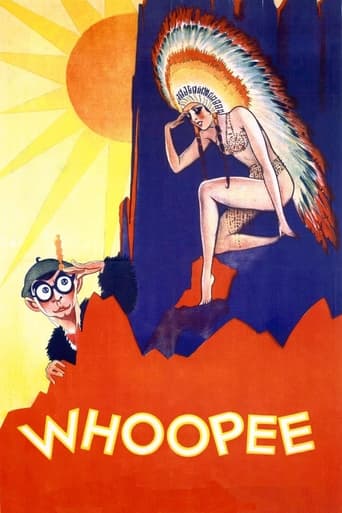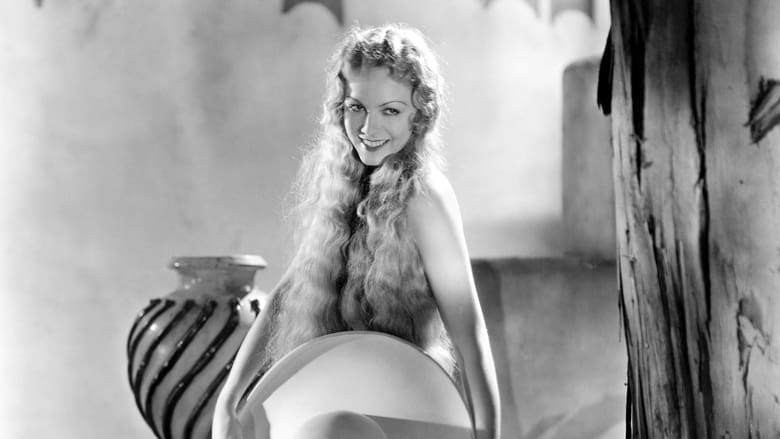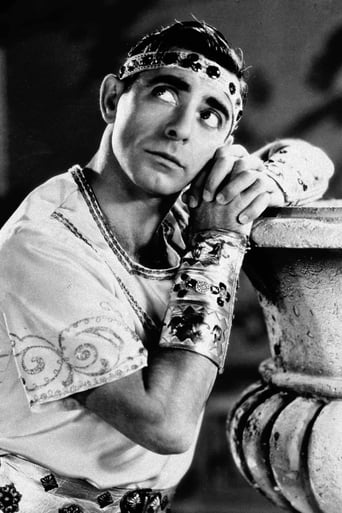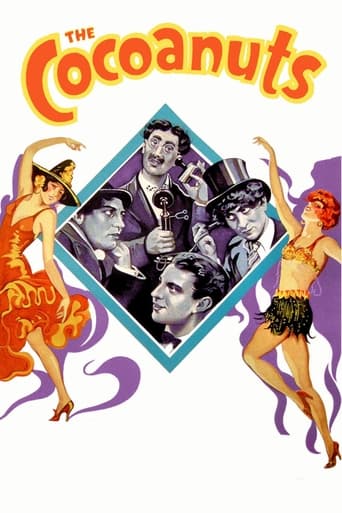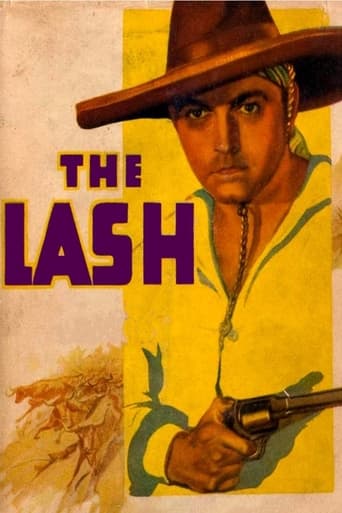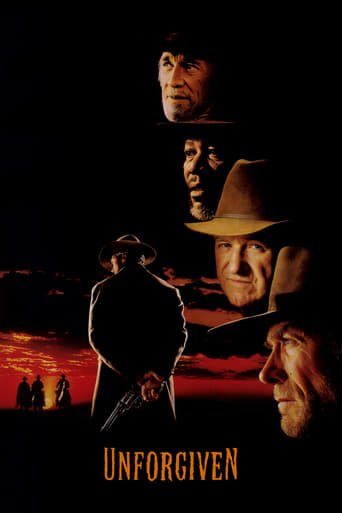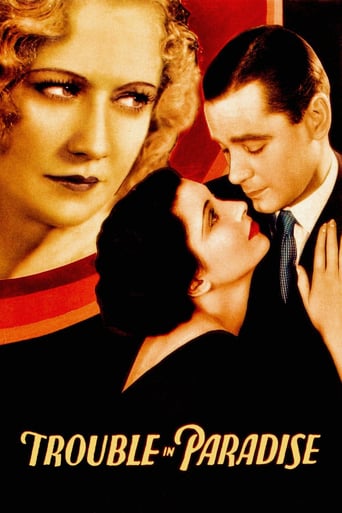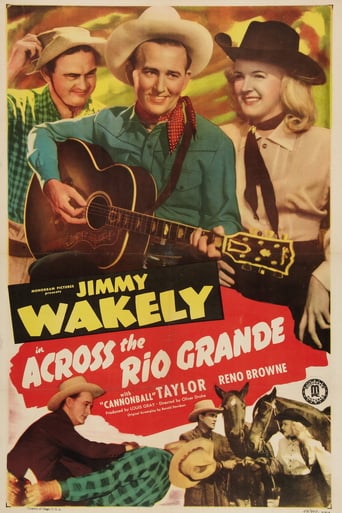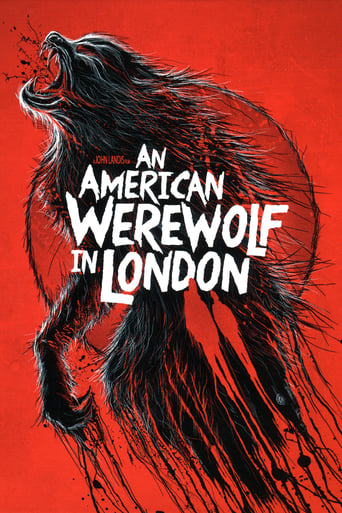Whoopee! (1930)
Western sheriff Bob Wells is preparing to marry Sally Morgan; she loves part-Indian Wanenis, whose race is an obstacle. Sally flees the wedding with hypochondriac Henry Williams, who thinks he's just giving her a ride; but she left a note saying they've eloped! Chasing them are jilted Bob, Henry's nurse Mary (who's been trying to seduce him) and others.
Watch Trailer
Cast


Similar titles
Reviews
Such a frustrating disappointment
A Major Disappointment
The performances transcend the film's tropes, grounding it in characters that feel more complete than this subgenre often produces.
It is an exhilarating, distressing, funny and profound film, with one of the more memorable film scores in years,
In terms of cast the film Whoopee is a considerably cut down version of the Broadway show. That could be said of the Donaldson-Kahn score as well. But in terms of the film it was a valiant attempt, a trial run at making the musical not just a photographed stage play. For that effort Whoopee got an Academy Award nomination for Best Art Direction.Before Eddie Cantor starred in the musical version of Whoopee on Broadway which ran for 407 performances in the 1928-29 season, it had been a straight comedy play The Nervous Wreck which ran for 279 shows in the 1923-24 season. I have to confess I was a little shocked when I saw that Otto Kruger had played Cantor's role of Henry Williams, the nervous hypochondriac who went west seeking a cure for his multitude of ailments. I sure didn't see that coming.In any event Whoopee has Cantor at a dude ranch with his private nurse Ethel Shutta who was also repeating her role from Broadway. His good friend an Indian played by Paul Williams has an unrequited love for Eleanor Hunt and she him. But the racial differences make this romance impossible at least on the stage and screen of the Twenties. She's engaged to marry the sheriff John Rutherford, but rather than do that she tricks poor Cantor the schnook into running off with her. That leads all on a merry chase throughout the film.Walter Donaldson and Gus Kahn wrote the score for Whoopee on stage and screen and of course Eddie Cantor's big number was his classic Making Whoopee. Even today this salute to the phrase 'cheaper to keep her' carries a lot of laughs. Donaldson and Kahn wrote some new songs including another that Cantor introduced on screen that also became associated with him throughout his career, My Baby Just Cares For Me.Ethel Shutta was quite a performer herself and this is the only time we can see her in her prime as she competes with Cantor for laughs and does some nice dancing in the Stetson number. She was married to orchestra leader George Olsen who led the pit orchestra on Broadway for Whoopee and accompanies on the soundtrack in this film.This film also introduced Busby Berkeley to the silver screen and according to Herbert Goldman's biography of Cantor, it was Cantor who persuaded Sam Goldwyn to hire Berkeley. His numbers are nicely staged though he wasn't anywhere near his peak creative years with Warner Brothers. On Broadway Ruth Etting had a specialty part and introduced what became her theme song in Love Or Leave Me. Sadly Ruth and the song got eliminated from the film and that is a pity. If you remember the part that Patrice Wymore played in the Gus Kahn biographical film I'll See You In My Dreams her role was based on a combination of Etting and Clara Bow.Sadly Whoopee does bow to the racial and racist mores of its time. A solution to the marital problems is found that would not fly today.Despite that Whoopee is worth seeing in order to see one the great performers of the 20th Century in a role that Eddie Cantor made his own.
This is one of the oldest surviving all-color talking films. The only other one I can think of from 1930 that is still with us is Universal's "King of Jazz" and "Under a Texas Moon". It will probably seem odd to you at first that the sheriff and his deputies - I assume they are deputies - are all dressed in rather cartoonish over-sized cowboy hats and pink scarves, but you have to remember two things. First this is, at heart, a musical farce and the costumes are part of that farce. Secondly, remember that two-strip Technicolor was all they had in 1930, that it was still considered a treat by the public, and that pink and blue were the colors this process rendered best.The tale that acts as a vehicle for all of Eddie Cantor's antics is a simple one, and one that is repeated in several films over the years - that of forbidden love between races. Sally, a white girl, falls in love with Wanenis, an Indian. Since such marriages were forbidden, Wanenis goes away into the wilderness to deal with the fact they cannot be together. In the meantime, Sally's father arranges for her to marry Sheriff Bob Wells. Wanenis returns on Sally's wedding day, not knowing it is her wedding day. When Sally sees Wanenis, she knows she cannot go through with the sham wedding and runs away. The fun comes in with how she runs away. She tells sickly Henry Williams (Eddie Cantor) that she and Bob are planning to elope, and that she needs him to drive her into the next town. However, she leaves a note for everyone else saying she has eloped with Henry. Not only is the vengeful sheriff, his men, and Sally's father soon hot on their trail, but Henry's aggressively love-sick nurse is after them too. Only Wanenis finds this whole thing an odd turn of events and takes a short cut to go looking for them, separate from the rest of the pack. Complications and opportunities for Cantor's always enjoyable remarks, eye movements, and musical interludes ensue.This film survives intact in splendid shape, and the Technicolor truly yields a spectacular painted desert. Although best remembered songs from this film will always be title song "Makin' Whoopee" and "My Baby Just Cares For Me", both performed by Eddie Cantor, I also really liked the love ballad sung by the star-crossed lovers Sally and Wanenis -"I'll Still Belong to You". It has an operatic quality that is typical of love songs from that era, and oddly enough was written by Nacio Herb Brown of MGM songwriting fame.Finally, let me mention the fact that some of the racial aspects of this film might leave the modern viewer squeamish such as the stereotypes of native peoples and the fact that Eddie Cantor usually appeared in black-face as part of his act and does here too. Try to remember that none of this is out of character for a film made 80 years ago and no mean-spiritedness was intended at the time. Highly recommended for a chance to see Eddie Cantor in one of his best.
In its day, this must have been a fine picture and I'm sure it made Sam Goldwyn a lot of money. But, after 76 years, this film has not aged well. In fact, much of the humor seems pretty unfunny nowadays--especially since some of it is so offensive towards Indians and Blacks. Cantor in black face and natives who continually say "ugggh" were considered funny stereotypes when WHOOPEE was playing on stage and film, but this just provides uncomfortable today. In fact, considering that so many jokes are based on this, it may be very hard viewing for many, though I also believe you can't totally focus on this or else you'll be throwing out so much of our history. Now I am sure in 1930 they may have meant no harm by these scenes--nevertheless, this doesn't mean they are okay. Apart from these aspects of the film, the jokes seem old and the Busby Berkeley dance numbers also seem pretty out of date--though both are pretty risqué for the time--with a lot of sexual innuendos! Apart from the bizarre song and dance numbers in FLYING DOWN TO RIO, the Indian dance from this movie might just be one of the weirdest and most ridiculous numbers of the era.But the movie still gets a score of 4 because it was very competently made and the two-color Technicolor is pretty good for the era (though of course, nowhere near as nice as the later full color films). Plus, it is important historically. Even as a flawed film, it's good we still have an excellent copy--this isn't true of a lot of the films from 1930!By the way, before you assume I am a confirmed Eddie Cantor hater, understand that I have given excellent reviews to some of his later films. But just not this one.
Quite a surprise for such a lesser known, starless film. Whoopee! is a delightfully funny and entertaining musical comedy. Credit the comic actor, Eddie Cantor, for pretty much making the film everything it is. This nasally, spectacled, Jewish wisecracker is like a cross between Woody Allen and Groucho Marx. Plus he sings! Cantor is simply fun to watch. His comic timing is excellent and his musical numbers are as catchy as they are risqué for the time. The movie only suffers whenever Cantor is not on screen. Like many comedies of the time, there had to be a love story and a separate romantic lead. This does nothing but detract from the film, especially since the rest of the cast is completely horrible. Some of the dance sequences also drag on too long, but other than that, the film is well worth seeing.

